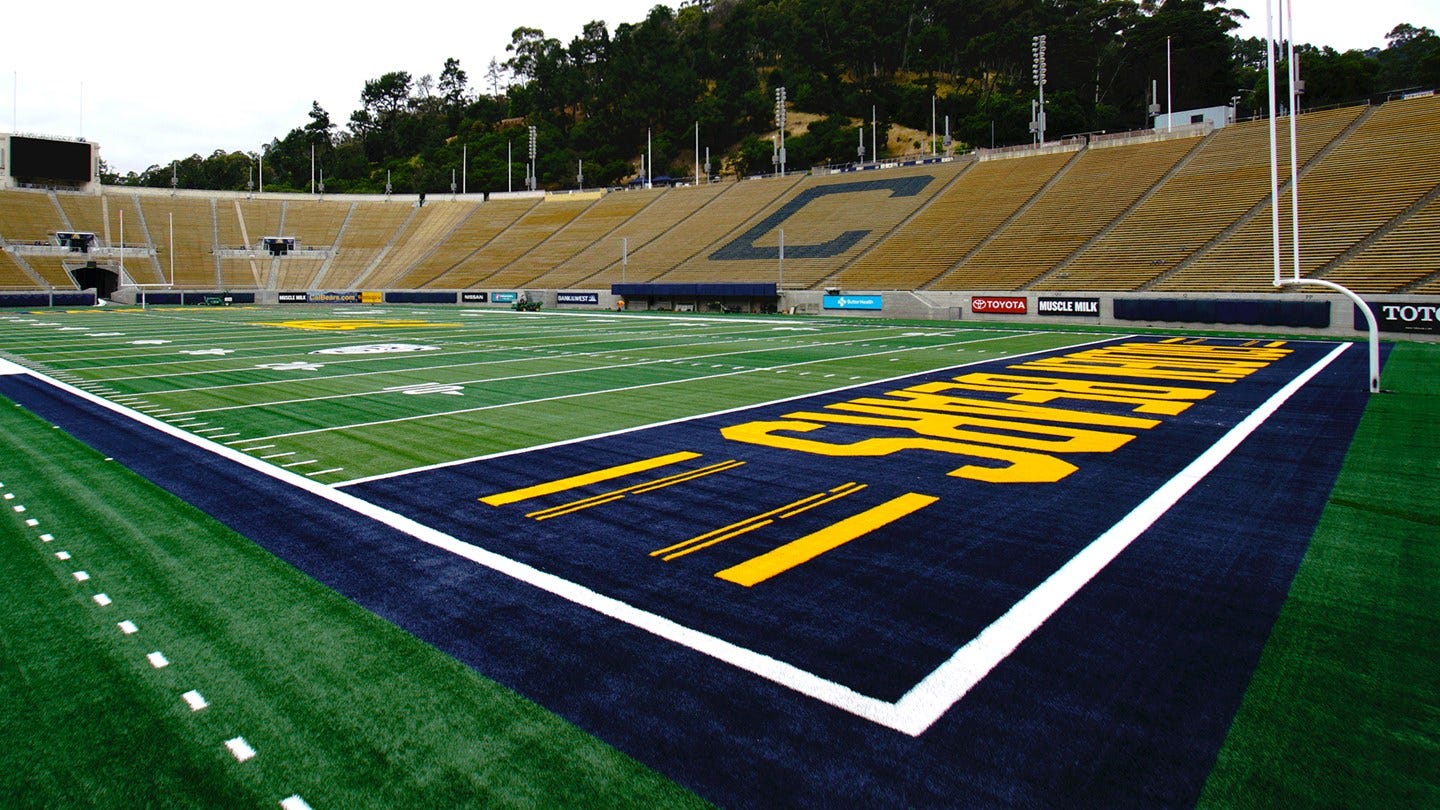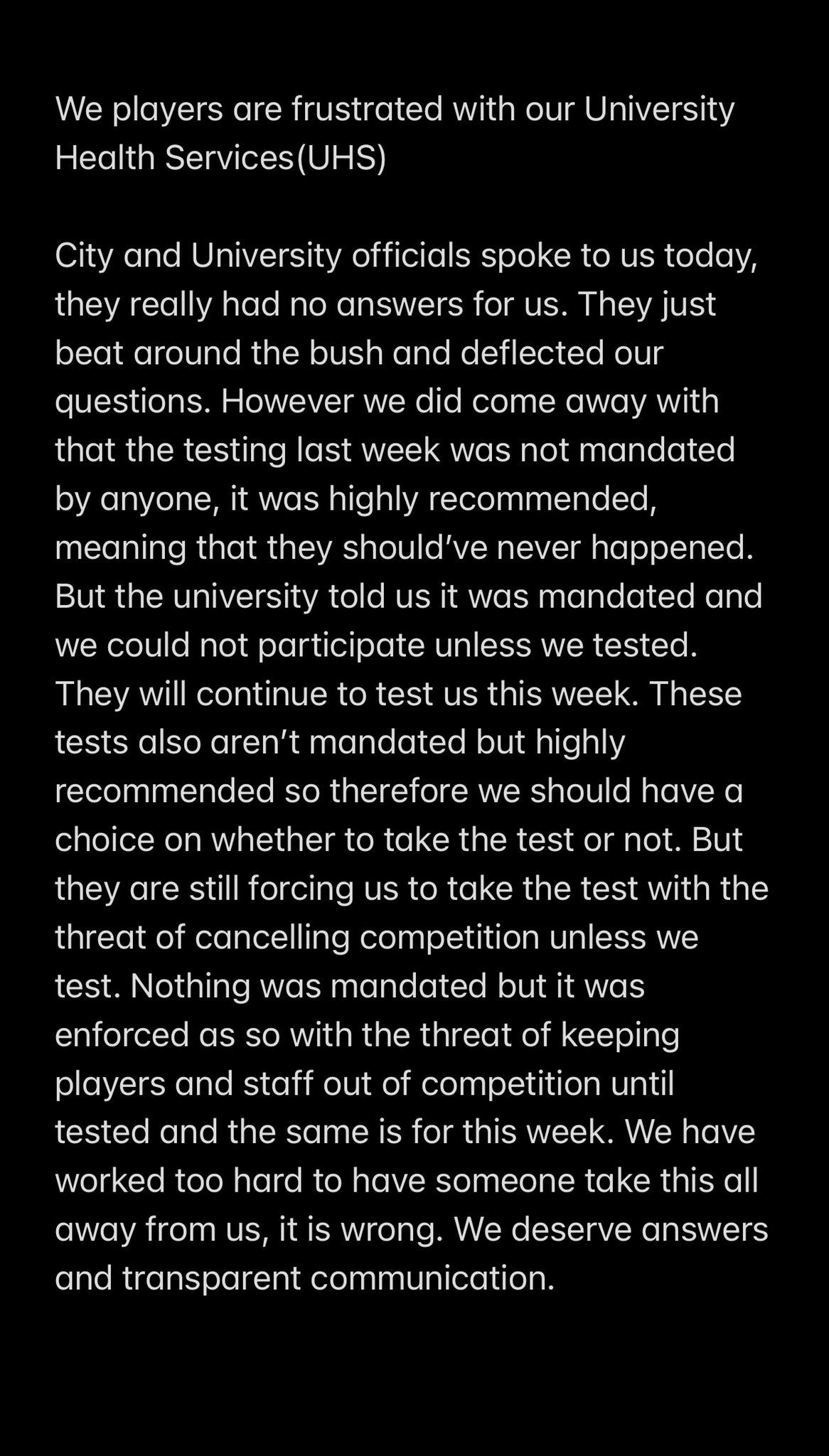Inside the Cal v. Arizona Football Game and the 'COVID-19 Protocols'
Chase Garbers speaks out about last Saturday's game
Chase Garbers and 23 other California Golden Bears did not travel to Tuscon, Ariz., to compete against the Arizona Wildcats because of “COVID protocol,” the university said early last week.
As a result, California lost to Arizona in a 3-10 decision this past Saturday. Beyond the game result, Golden Bears are upset.
“We players are frustrated with our University Health Services,” started a note posted by Garbers on Twitter Monday night. “City and University officials spoke to us today, they really had no answers for us.”
It appears the COVID-19 protocols that prevented the Golden Bears from fielding their complete roster came from the city of Berkeley and the University of California, Berkeley administration. The city of Berkeley is unique, as it has its own public health division.
In a press conference after the Cal v. Arizona football game, California head coach Justin Wilcox explained to reporters that he had not heard from the Pac-12 Conference about whether his 24 players and five coaches who did not travel would be available this coming week.
“I have not heard anything from the Pac-12. This is a city of Berkeley, and campus, they’re the ones relaying the information to me,” Coach Wilcox said, referring to the no-travel decision.
What happened in the Cal v. Arizona football game?
On Thursday, Nov. 4, Cal Athletics announced “multiple Cal football student-athletes are in COVID protocol and will not be available to play in Saturday’s game at Arizona” in a press release.
The university athletic department cited student privacy laws to avoid listing the number or names of affected players.
However, in an updated depth chart released by California on Saturday, who was affected became clear. Chase Garbers and seven other starters, including kicker Dario Longhetto, defensive end Luc Bequette and inside linebacker Trey Paster, were notably absent from the list.
Why did Cal lose so many of its football players against Arizona?
Student-athletes take occasional COVID-19 tests as part of public health guidelines to combat the ongoing pandemic. A positive COVID-19 test may require additional testing for the individual and others, plus potentially other precautions.
Last week, one or more California football players and coaches tested positive for COVID-19, which initiated the COVID-19 protocols.
According to an FAQ about positive COVID-19 cases published on a University of California, Berkeley coronavirus resource webpage: “When someone tests positive for COVID-19, they are required to isolate for at least 10 days per [city of Berkeley] public health isolation order, regardless of vaccination status.”
There are different public health guidelines for individuals depending on whether an individual is vaccinated against COVID-19. Unvaccinated individuals typically must undergo more frequent testing and adopt additional safety precautions, including required mask-wearing when indoors.
Garbers believes he and his teammates should have been subject to the more lax requirements. According to the university athletic department, “99 percent of football student-athletes are fully vaccinated” against COVID-19.
In the note posted on Twitter, Garbers said, “the testing was not mandated by anyone.”
He added, “it was highly recommended, meaning that they [the COVID-19 testing] should’ve never happened. But the university told us it was mandated and we could not participate unless we tested.”
“They will continue to test us this week,” the note continued. “These tests also aren't mandated but highly recommended so therefore we should have a choice on whether to take the test or not. But they are still forcing us to take the test with the threat of cancelling [sic] competition unless we test.”
“Nothing was mandated but it was enforced... with the threat of keeping players and staff out of competition until tested,” the quarterback said of the city health division and university health services department.
Chase Garbers’ note concludes: “We have worked too hard to have someone take this all away from us, it is wrong. We deserve answers and transparent communication.”





Shorter version:
"If we stop testing right now, we'd have very few cases, actually,"
Oh wait, that wasn't Chase who said that. Sorry...
Luc Bequette is also upset. I think some of the frustration was that the players assumed getting vaccinated would remove the testing requirement, thus keeping them on the field.
https://twitter.com/LucBequette/status/1457953453368438785?t=Mncq3gKtpU5DjvEnTYLWHQ&s=19
Point 8 of the October 28 quarantine order seems to reinforce this. However, I'm guessing the testing in Point 9 is what swept everyone up. It's labeled as a "should" and not a "must" though the Uni seems to be treating it as a "must" per player complaints.
Anyway, if someone tests positive, isolation policy kicks in instead of quarantine. Keeping players who test positive at home is the correct action. However, the players have a point about the city's language and the University using the strictest interpretation (I made this point elsewhere, where bureaucrats may interpret rules beyond their intent.) So players will be mad at the City, Uni, or both in how they perceive this.
There is more to public health than detecting every single instance of a disease. If we had that ability then the policies would look different. I'm this case, the players really are a unique population when compared to the general public, being highly-vaccinated and spending much of their time around each other (even living together). And I've brought up my questions about the testing elsewhere (it may be fine, but that's significantly higher positivity rate than I'd expect and reports of subsequent negative tests make me also wonder. We need more info since not all tests are equal.)
Best I can piece together is that this policy was interpreted in the most rigid way possible when it's not clear that was most appropriate for this specific subpopulation. But having done the testing, the decision to keep players home was correct. The whole situation seems like it was poorly communicated. Players presumably took personal risks (or not) under one set of conditions and the outcome was statistically worse than chance (or anyone) would predict. It may just be really bad luck, that we're undertesting the general population, or that not every positive test represents the same transmissibility. Converting between the population and the individual level is far from exact, especially when there are extrinsic pressures. Which is why the University HAS to explain what happened if they indeed feel they did everything right. That's a hell of a lot smarter than letting angry players do the talking.